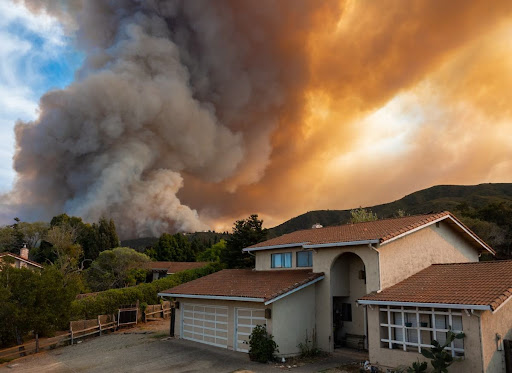Losses from recent wildfires in California have led many insurance carriers to scale back, and some have completely ceased writing insurance in several California regions. For homeowners who have found themselves unable to find another company that will insure their property, the California FAIR Plan remains the only option. So what is it? And how can it work for you?
Quick Links
- The California FAIR Plan: What Is It?
- What Does the California FAIR Plan Cover?
- What Is Not Covered by the FAIR Plan?
- How Much Does the California FAIR Plan Cost?
- What Is the Maximum Limit for the California FAIR Plan?
- How Does the California Sustainable Insurance Strategy Affect the FAIR Plan?
- California FAIR Plan for Businesses
- California FAIR Plan Endorsements
The California FAIR Plan: What Is It?
The California FAIR Plan is a state-mandated insurer of last resort that provides basic property insurance coverage to homeowners and businesses who are unable to obtain insurance elsewhere. It offers basic coverage to properties that are deemed too high risk by private insurers, often due to factors like location in wildfire-prone areas or other significant risk exposures.
Who Runs the California FAIR Plan?
The FAIR Plan (which stands for “Fair Access to Insurance Requirements”) was established in the 1960s to assure the availability of basic property insurance. The FAIR Plan isn’t taxpayer-subsidized, though; all California-licensed property insurers are required to be part of the FAIR Plan as a condition of doing business in this state.
Thus, each insurance company operating in California backs the FAIR Plan, ensuring strong liquidity in the event of disaster, and each insurer participates in the gains and losses of FAIR Plan policies.
What Does the California FAIR Plan Cover?
FAIR Plan policies are truly basic and provide less coverage than a standard market insurance policy. The standard FAIR Plan homeowners policy covers damage and loss from specific perils only, including:
- Fire
- Smoke
- Internal explosions
- Lightning1
Consumers can add coverage for other perils, such as windstorms, hail, and vehicle damage through endorsements, the most common of which are the Extended Coverage Endorsement (ECE) and the Vandalism and Malicious Mischief Endorsement (VMM). These endorsements can be purchased from private insurers through what’s called an additional Difference in Condition (“DIC”) Policy.2
What Is Not Covered by the FAIR Plan?
The FAIR Plan homeowners policy does not cover water damage or theft, it doesn’t provide liability insurance, and it only insures properties at actual cash value.
The base level FAIR Plan homeowners policy provides coverage for the main dwelling but no separate coverage limit for other structures like a standard market policy does. Instead, a small portion of the dwelling insurance limits (10%) can be applied to other structures on the property. An insured would have to purchase additional coverages for those other structures, like a barn or a granny flat (i.e. an accessory apartment or dwelling unit).
The base FAIR Plan homeowners policy covers losses to personal property and some landscaping. But debris removal and ordinance and law coverage must be purchased separately. There is no separate coverage available for alternative living expenses, but an insured can use a small portion of the dwelling limits for that purpose, again 10%.
How Much Does the California FAIR Plan Cost?
According to a statement made by a spokesman for the organization in 2022, the average annual policy cost for the California FAIR Plan is around $3,200. The average policy cost has likely increased since then, however, and in 2024, customers insured under the FAIR plan are expected to see rates increased by more than 15% on average compared to last year.
Can You Pay the California FAIR Plan monthly?
The FAIR Plan now offers three payment options:
- Full Pay – One full annual payment for the year.
- Tri-annual – 3 installment payments of 40%, 30%, and 30%.
- Monthly Plan – 11 installment payments (an initial payment of 16.67% plus 10 equal payments after that). This option is applicable to new business policies transacted after 10/27/2023 and policies with renewal effective date of 12/01/2023 and beyond.

What Is the Maximum Limit for the California FAIR Plan?
Dwelling limits cannot exceed $3 million, which may be enough for some insureds but not many others in high-risk areas, like Malibu or certain areas of Northern California. Homeowners can also select from a range of deductibles between $100 and $10,000 to save money on their premiums.
Commercial buildings can also be insured through the FAIR Plan. These policies protect against more perils than the FAIR Plan homeowners policy. The coverage limits for commercial property policies cannot exceed $20 million per building.
How Does the California Sustainable Insurance Strategy Affect the FAIR Plan?
Seven of the largest insurance carriers in California began pausing or significantly limiting new home insurance policies in late 2022. This has expanded the number of people insured under California’s FAIR Plan: Between 2019 and 2024, the number of properties has doubled to 350,000 homes and businesses, and the FAIR Plan now has more than $320 billion in exposure.
In response, the state introduced the California Sustainable Insurance Strategy in 2023, which aims to bring stability to the home insurance market by encouraging private providers to return to the state. One way it aims to do that is by promoting practices and policies that better align with the realities of climate change, which would allow insurance companies to set rates that more accurately reflect forecasted risks in the state.
California FAIR Plan for Businesses
Businessowners can also buy a FAIR Plan policy. These policies include more coverages than just structure coverage, such as business liability, business income, and extra expense coverage. These may have to be purchased for an additional cost if desired. The maximum limits available for a structure under these policies is $20 million per location.
Brokers should be very careful to explain the full details when selling FAIR Plan policies, even if the policy itself spells out its limitations clearly. Policyholders are often ignorant of the extent of their coverage and rely on their brokers to explain it to them. Brokers may be held liable for misrepresenting the scope of coverage or failing to explain how the FAIR Plan is different from the standard market policy their customer is used to having.
California FAIR Plan Endorsements
Endorsements, also known as riders or add-ons, are modifications or additions to an existing insurance policy that alter its terms, coverage, or conditions. Property owners can purchase endorsements through private insurers that allow them to fill in some of the gaps in coverage left by the standard FAIR Plan policy. Two of the most common endorsements are:
- Extended Coverage Endorsement (ECE): This is one of the most common endorsements, adding coverage for losses caused by windstorms, hail, aircrafts, “riot or civil commotion,” vehicles, and volcanic eruption.
- Vandalism and Malicious Mischief Endorsement (VMM): This provides coverage for damage caused by vandalism or other similar acts of property damage and destruction.
How Much Does It Cost To Add an ECE to a FAIR Plan Policy?
The cost of adding an ECE to a California FAIR Plan policy is influenced by several key factors, such as:
- Property Location: Properties in high-risk areas for wind, hail, or other perils covered by the ECE generally have higher endorsement costs.
- Dwelling Value: The value of your home influences the cost of the endorsement, as it increases the potential payout in case of a claim.
- Deductibles: Choosing a higher deductible for the ECE coverage can lower the endorsement premium, but you pay more out-of-pocket in the event of a claim.
To get an accurate quote for an ECE, it’s crucial to consult with a licensed insurance agent or broker who provides Difference in Condition policies.
Further Resources on Insurance Coverage Law
Navigating the complexities of insurance claims can feel overwhelming. Whether you’re facing unpaid claims or simply filing for the first time, our eBooks equip you with the crucial information you need to advocate for yourself with confidence.
- Filing A Property Insurance Claim
- Insurance Company Response Time
- What To Do When You Have a Denied/Underpaid Claim
- Wildfire Claims
- Flood Claims Handbook
- More Information on Hurricane Deductible and Policy Limits
- Condominium Hurricane Preparedness
Why Merlin?
Are you fighting an insurance company that won’t pay up on claims? With nearly 40 years of practice and $2 billion in recovered claims, our team stands by your side to ensure you can face any insurance challenge with confidence. Contact us today for a consultation, or read more about how we’re your trusted advocate.
1 Bowman v. State Farm Fire & Cas. Co., No. 1256-22-3, 2023 WL 8040862 (Vir. App. Nov. 21, 2023).
–
1 See, generally, https://www.cfpnet.com/
2 The FAIR Plan Association itself sees this huge potential for insureds to be misled and is proactively trying to educate the public. According to insurance broker and expert witness Karl Susman:
“It is clear to me that the FAIR Plan Association is deeply concerned about consumers procuring insufficient insurance for their homes. They continue to send out numerous bulletins to policyholders with information ranging from brief summaries on what the FAIR Plan policy does and does not cover.”
https://expertwitnessprofessionals.com/; https://www.susmaninsurance.com/




